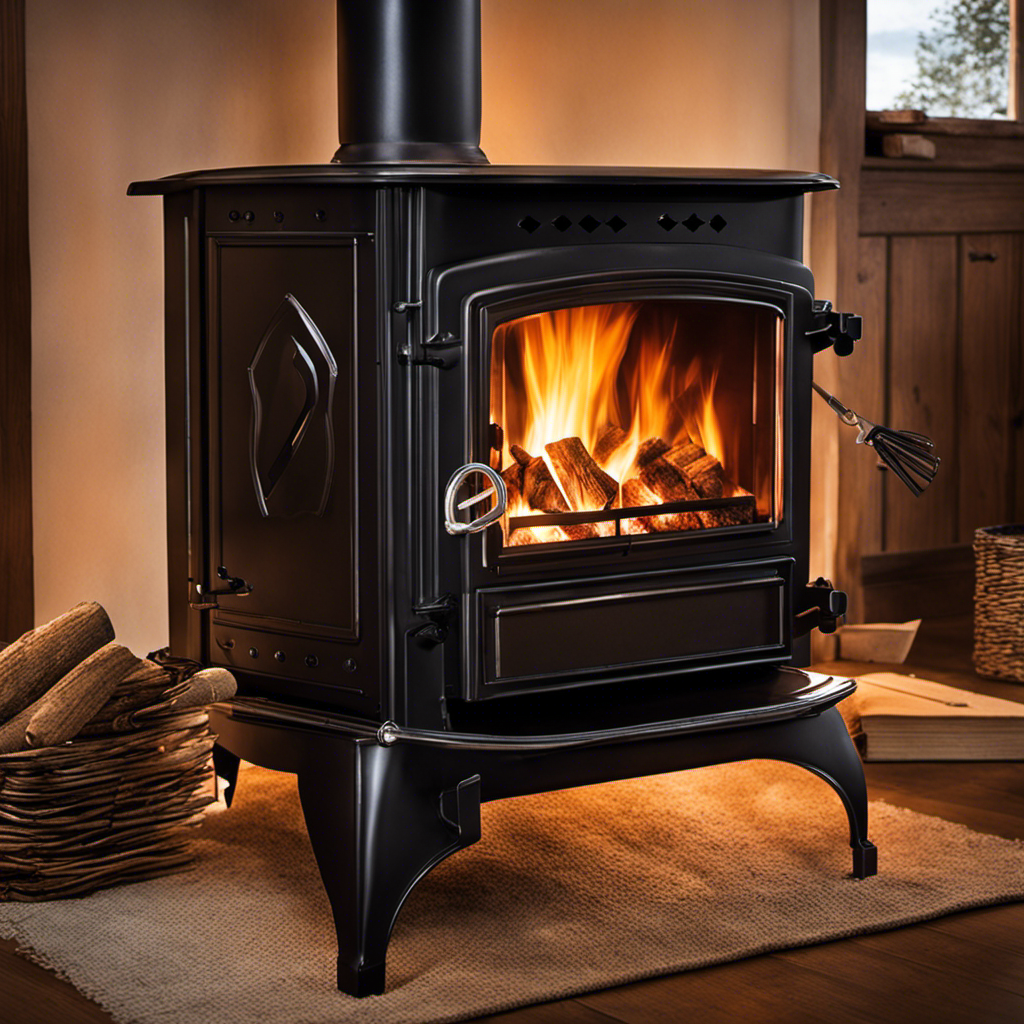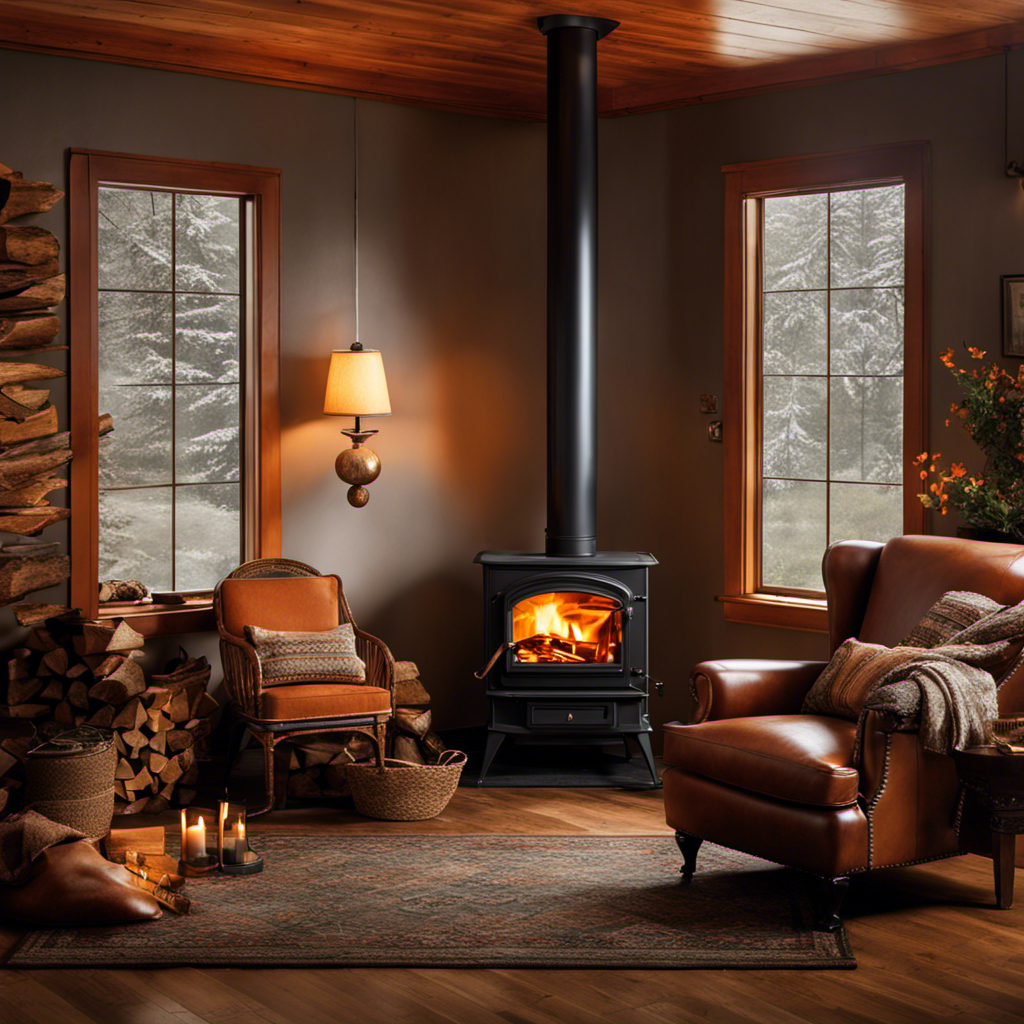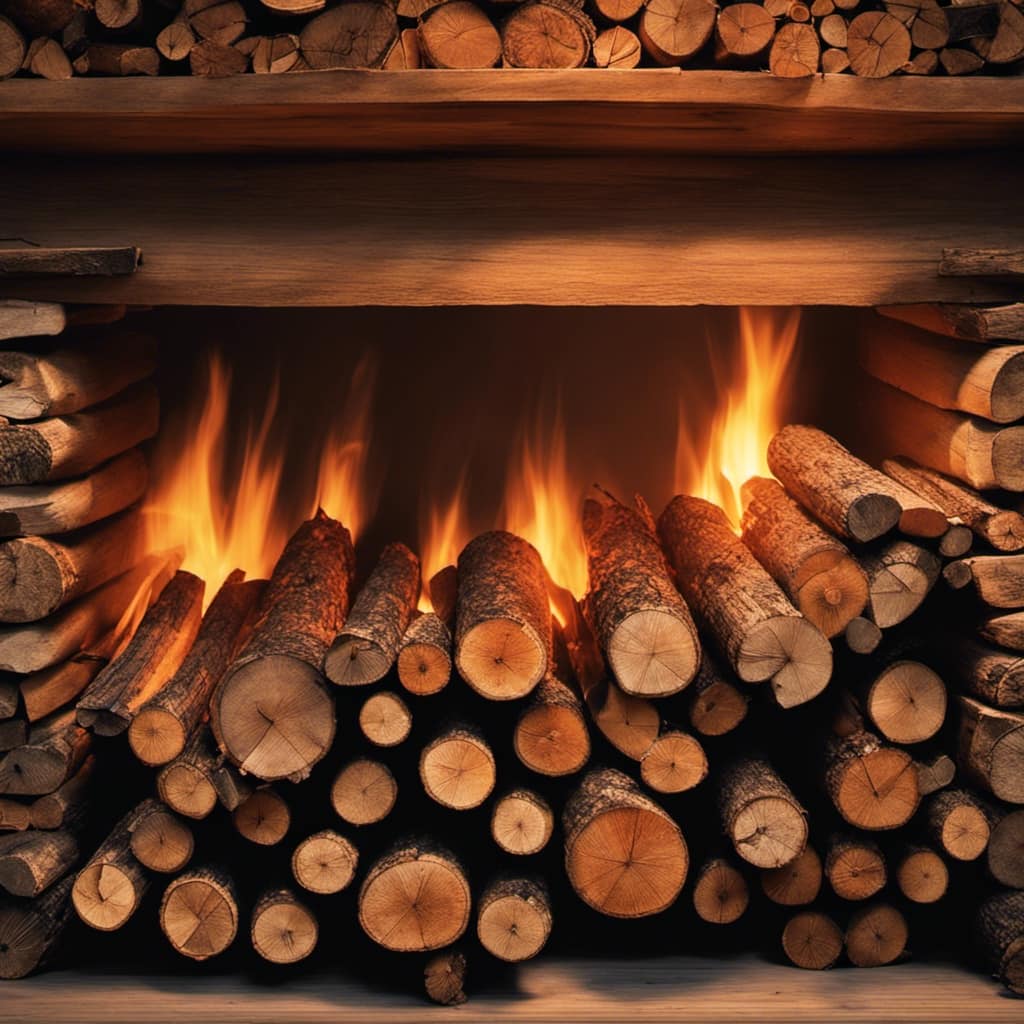
Sitting next to my wood stove, enjoying its comforting warmth, I find myself pondering: where is the airwash control located?
This small yet mighty feature plays a crucial role in keeping the glass clean and ensuring optimal performance.
Join me as we delve into the importance of airwash control, explore how it works, and discover where to find it on your wood stove.
Get ready to make the most of your wood-burning experience!

Key Takeaways
- Airwash control on a wood stove is typically located on the front or side of the stove, allowing for easy access and adjustment.
- The airwash control directs a flow of air across the glass door, creating a barrier between the fire and the glass to prevent the buildup of soot and debris.
- Regular cleaning and maintenance of the airwash control are necessary to ensure optimal performance.
- Adjusting the airwash control according to the fuel type, moisture content, and burn rate is important for optimizing its effectiveness and enhancing the wood-burning experience.
Importance of Airwash Control on Wood Stove
I personally think that the airwash control is crucial for maintaining clean and efficient combustion in a wood stove.
The airwash control is a feature that allows the user to regulate the amount of air that enters the stove, specifically the air that’s used to keep the glass door clean. This control helps to prevent the build-up of soot and other deposits on the glass, ensuring that you can enjoy a clear view of the fire.
In addition to the aesthetic advantages of a clean glass door, the airwash control also contributes to the overall maintenance of the wood stove. By keeping the glass clean, it reduces the need for frequent cleaning and maintenance, saving you time and effort.
Overall, the airwash control is a valuable feature that enhances both the performance and appearance of your wood stove.
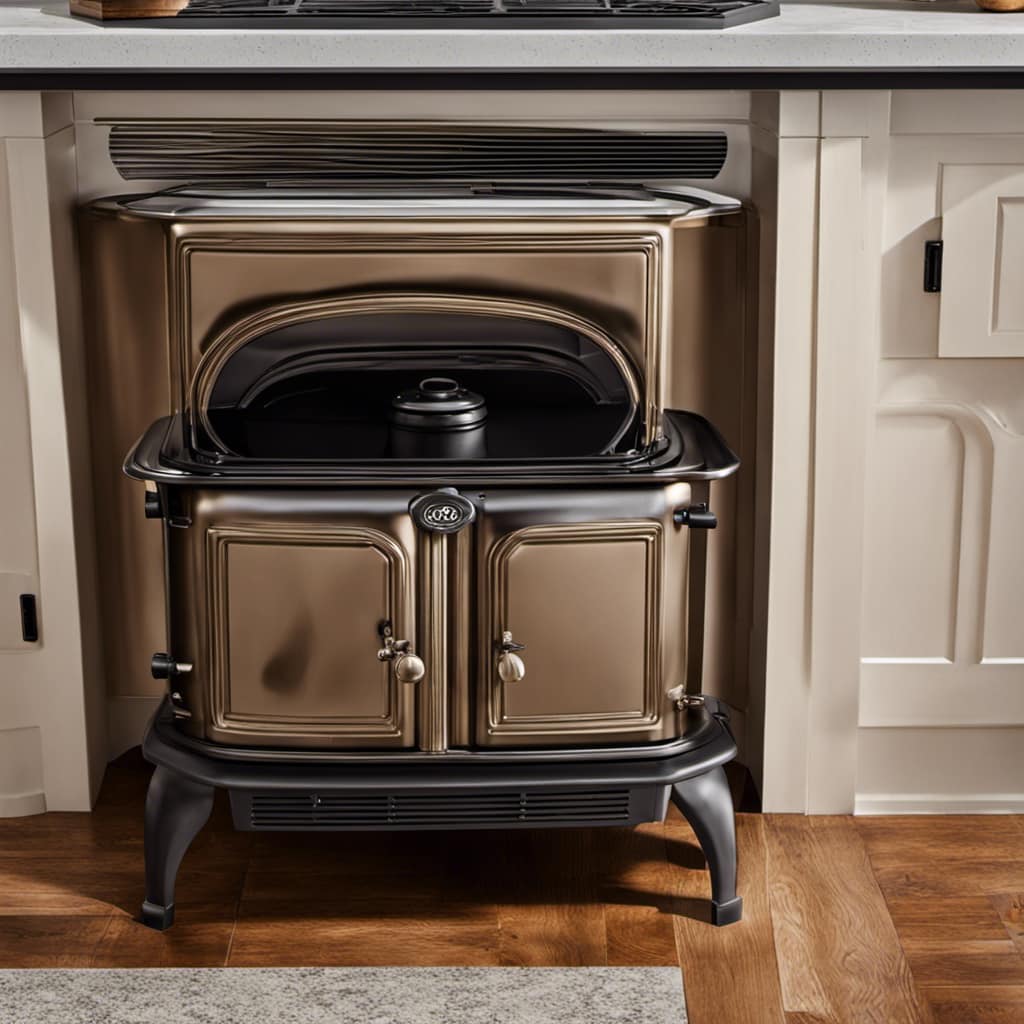
Benefits of Using Airwash Control on Wood Stove
Although it requires regular maintenance, using airwash control on a wood stove can greatly benefit by keeping the glass door clean and enhancing the overall performance.
Airwash control is a feature found in many modern wood stoves that helps prevent the buildup of soot and creosote on the glass door. By directing a flow of air across the glass, the control creates a barrier that prevents the smoke and particles from sticking to the surface. This not only improves the aesthetic appeal of the stove, but also allows for a clearer view of the fire.
Additionally, airwash control helps to optimize the efficiency of the wood stove by ensuring a clean and unrestricted airflow, which in turn leads to more efficient combustion and heat output.
Overall, the advantages of using airwash control on a wood stove include a cleaner glass door and improved efficiency, making it a valuable feature for anyone using a wood stove.
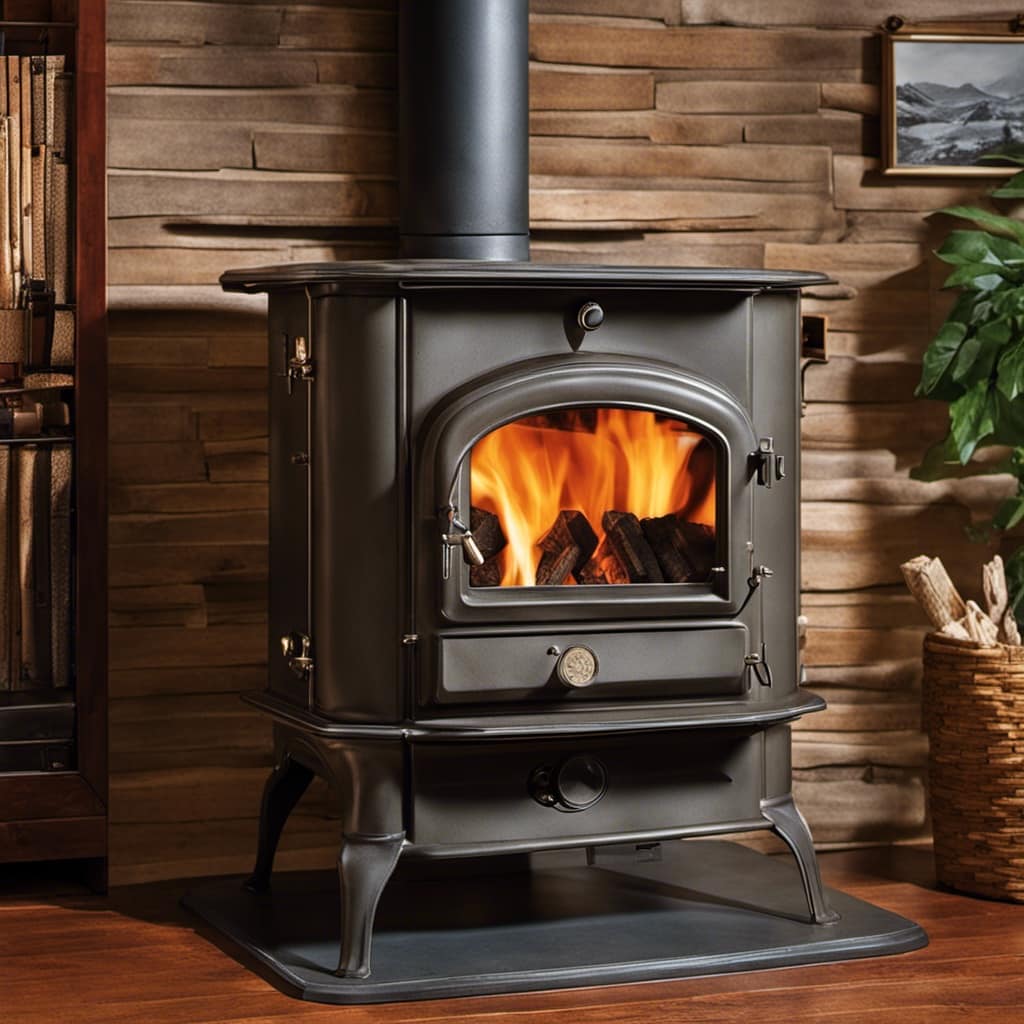
Understanding How Airwash Control Works
Airwash control effectively keeps the glass door clean by directing a flow of air across it, allowing for a clearer view of the fire, which is quite beneficial. It is a feature commonly found in wood stoves and helps in maximizing efficiency. Understanding how airwash control works is essential for troubleshooting any issues that may arise.
The airwash control system consists of an adjustable vent located at the top of the stove’s combustion chamber. By adjusting this vent, you can regulate the amount of air that flows across the glass door. This controlled air flow creates a barrier between the fire and the glass, preventing soot and other debris from accumulating and obstructing the view.
To help you understand the workings of airwash control better, I have created a table below that outlines its benefits and troubleshooting tips:
| Benefits of Airwash Control | Troubleshooting Airwash Control |
|---|---|
| 1. Clearer view of the fire | 1. Inspect and clean the glass regularly |
| 2. Prevents soot buildup | 2. Adjust the airwash control vent if necessary |
| 3. Maximizes stove efficiency | 3. Ensure proper airflow in the stove |
| 4. Enhances overall heating experience | 4. Seek professional help if issues persist |
Where to Locate the Airwash Control on Your Wood Stove
Typically, the airwash control is conveniently placed on the front of the wood stove for easy access and adjustment. This allows users to regulate the airflow and maintain optimal combustion.
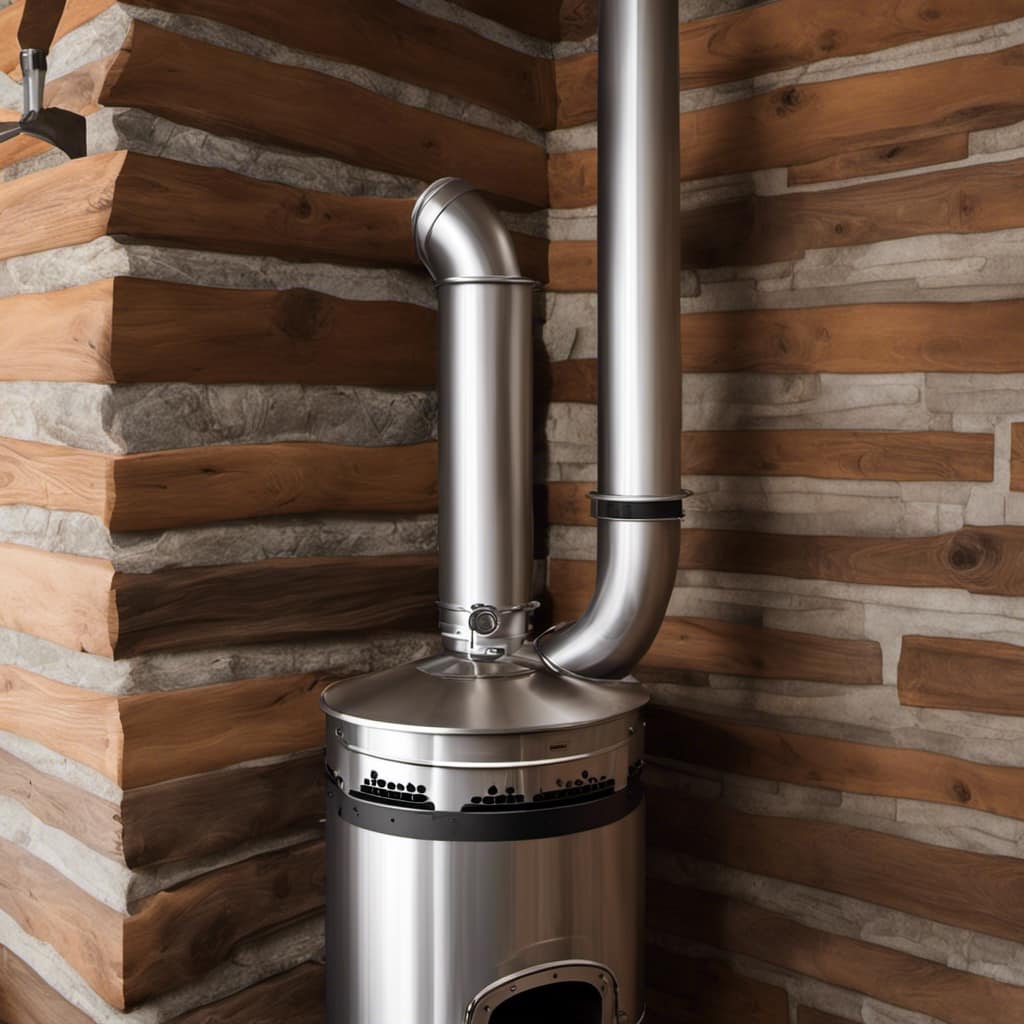
When it comes to wood stove maintenance, adjusting the airwash control is an essential task. Here are some important points to consider:
-
Location: The airwash control is usually located near the door or on the side of the stove, allowing for convenient operation while loading or tending to the fire.
-
Functionality: The airwash control works by directing a controlled amount of air across the glass door, creating a barrier that prevents smoke and soot from depositing and obscuring the view.
-
Adjusting: It’s crucial to adjust the airwash control according to the type of fuel, moisture content, and desired burn rate. This will ensure that the glass remains clean and the fire burns efficiently.
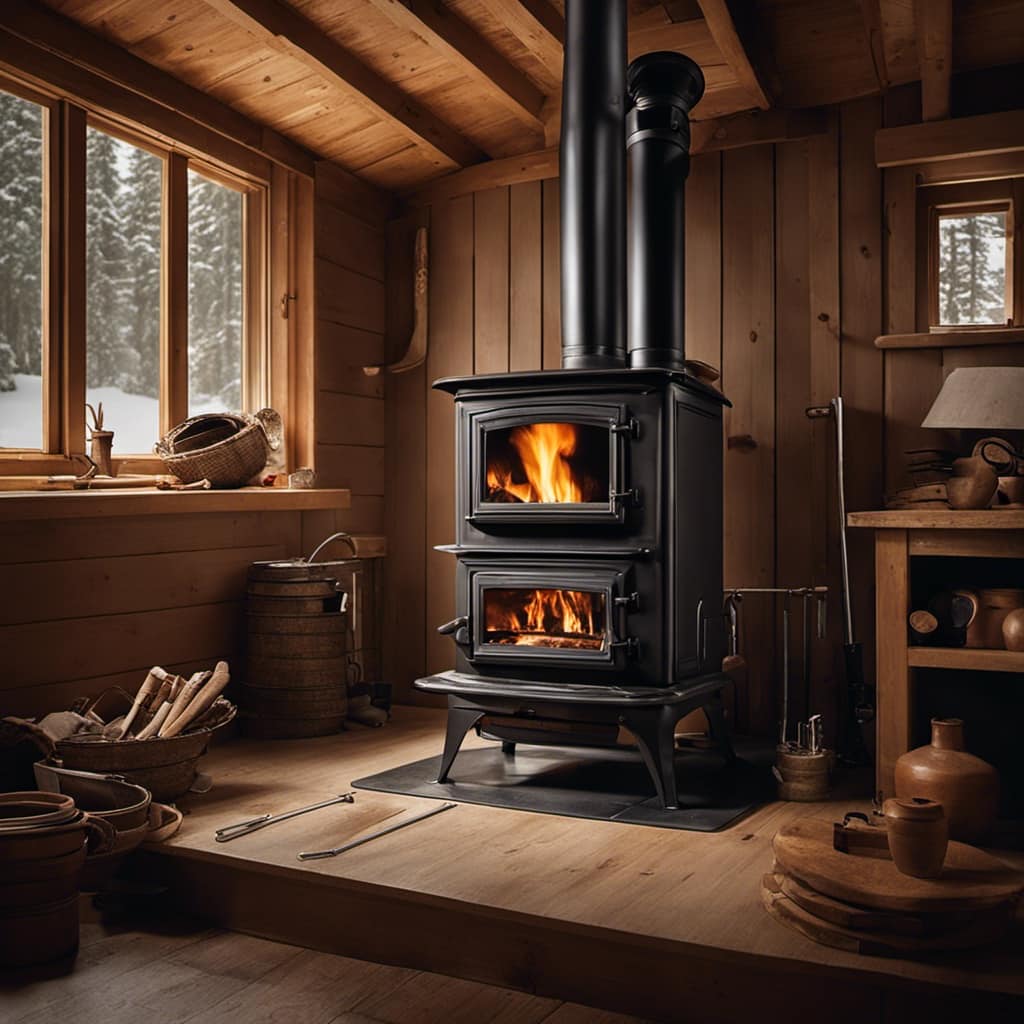
Tips for Optimizing Airwash Control on Your Wood Stove
I use my wood stove daily, so I always make sure to adjust the airwash control for optimal performance.
The airwash control on a wood stove is a mechanism that controls the amount of air entering the firebox. It’s crucial for maintaining a clean and efficient burn.
To adjust the airwash control settings, you need to locate the control lever or knob, usually located on the front or side of the stove. By adjusting the airwash control, you can regulate the amount of air that enters the stove, which affects the combustion process.
Troubleshooting the airwash control involves ensuring that it isn’t blocked or obstructed by any debris or soot buildup.
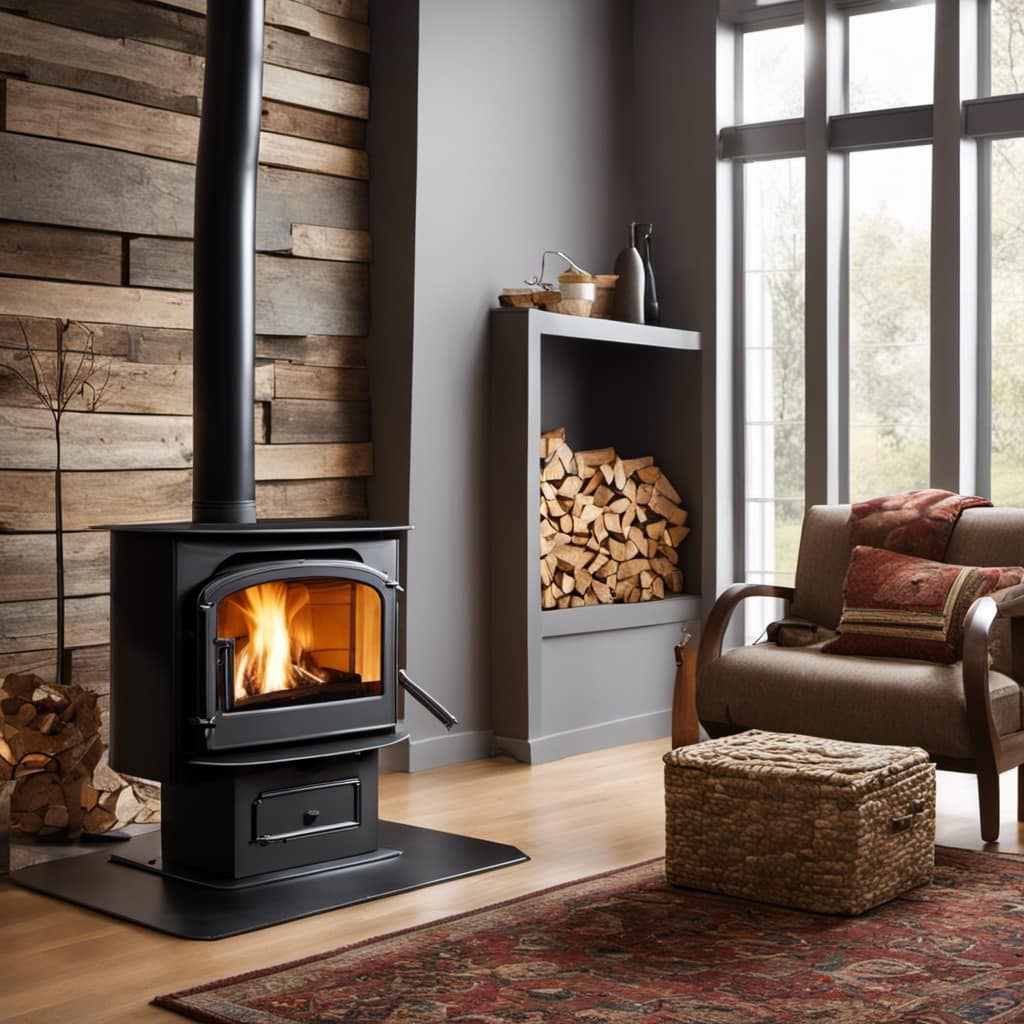
Regular cleaning and maintenance of the airwash control will ensure optimal performance and a cleaner burn.
Frequently Asked Questions
Are There Any Safety Concerns or Precautions to Consider When Using Airwash Control on a Wood Stove?
When using airwash control on a wood stove, it is important to be aware of safety concerns and take necessary precautions. Regular maintenance tasks, such as cleaning the airwash system, can help ensure its effectiveness and keep your stove operating efficiently.
Can Airwash Control Be Retrofitted Onto an Existing Wood Stove?
Sure, you can retrofit airwash control onto an existing wood stove. It offers many benefits, like keeping the glass clean and improving efficiency. The airwash control is usually located on the front or side of the stove.
Are There Any Maintenance or Cleaning Tasks Associated With Airwash Control?
Maintenance tasks associated with airwash control on a wood stove include regular cleaning of the airwash system, such as removing any soot or debris, and ensuring that the control mechanism is functioning properly. Cleaning procedures may vary depending on the specific stove model.
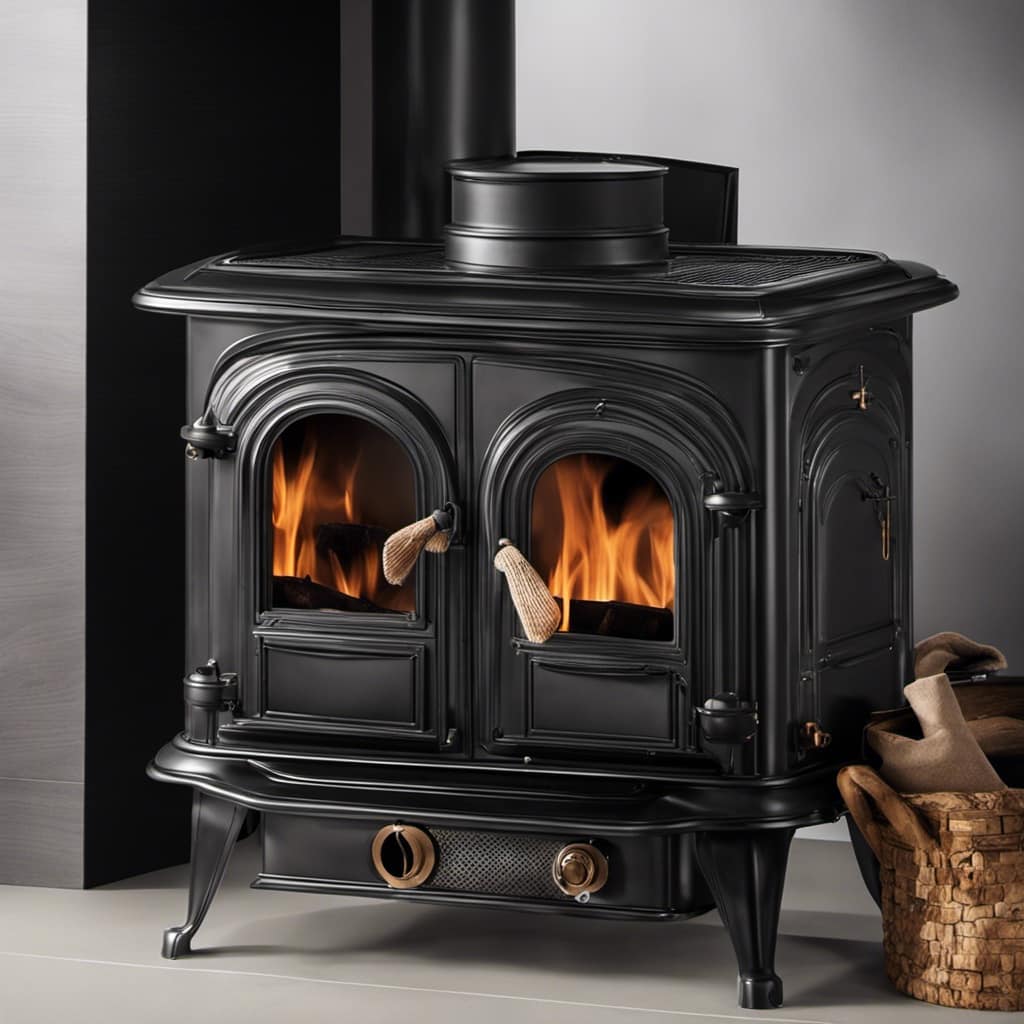
Can Airwash Control Improve the Efficiency of a Wood Stove?
Airwash control can improve the efficiency of a wood stove by regulating the amount of air that enters the combustion chamber. This helps to maintain a clean burn, reducing smoke and particulate emissions for better air quality.
How Does Airwash Control Affect the Emission of Smoke and Pollutants From a Wood Stove?
Airwash control is an important feature that affects wood stove performance. It helps reduce smoke and pollutants by directing air towards the glass, keeping it clean. This improves indoor air quality and overall efficiency.
Conclusion
In conclusion, the airwash control on a wood stove plays a crucial role in maintaining a clean and efficient burning process. By allowing a controlled flow of air to wash over the glass door, it prevents the buildup of soot and creosote, ensuring a clear view of the fire.
Did you know that using airwash control can reduce the frequency of glass cleaning by up to 90%? This statistic highlights the practicality and convenience of utilizing this feature on your wood stove.

Growing up surrounded by the vast beauty of nature, Sierra was always drawn to the call of the wild. While others sought the comfort of the familiar, she ventured out, embracing the unpredictable and finding stories in the heartbeat of nature.
At the epicenter of every remarkable venture lies a dynamic team—a fusion of diverse talents, visions, and passions. The essence of Best Small Wood Stoves is crafted and refined by such a trio: Sierra, Logan, and Terra. Their collective expertise has transformed the platform into a leading authority on small wood stoves, radiating warmth and knowledge in equal measure.





